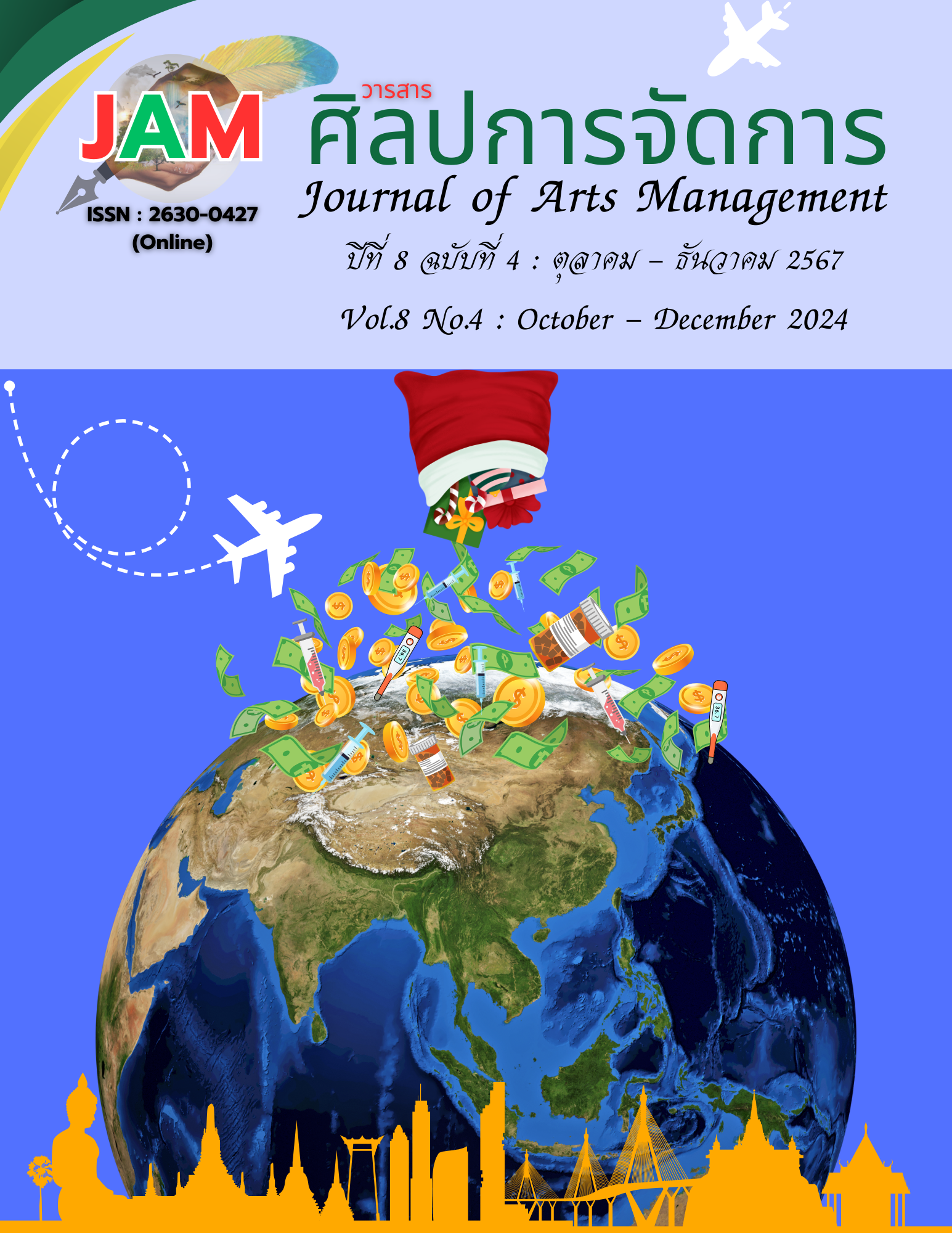การศึกษาสภาพที่เป็นจริงและสภาพที่คาดหวังในการเสริมสร้างคุณลักษณะ พลเมืองอัจฉริยะ สำหรับนักศึกษากลุ่มมหาวิทยาลัยเทคโนโลยีราชมงคล
Main Article Content
บทคัดย่อ
บทความวิจัยนี้มีวัตถุประสงค์เพื่อ 1) ศึกษาคุณลักษณะพลเมืองอัจฉริยะ สำหรับนักศึกษากลุ่มมหาวิทยาลัยเทคโนโลยีราชมงคล 2) ประเมินความต้องการจําเป็นสำหรับเสริมสร้างคุณลักษณะพลเมืองอัจฉริยะ สำหรับนักศึกษากลุ่มมหาวิทยาลัยเทคโนโลยีราชมงคล และ 3) เสนอแนวทางในการพัฒนานักศึกษาให้มีคุณลักษณะพลเมืองอัจฉริยะ สำหรับนักศึกษากลุ่มมหาวิทยาลัยเทคโนโลยีราชมงคล รูปแบบการวิจัยเป็นแบบผสานวิธีกลุ่มตัวอย่างที่ใช้ในการวิจัยครั้งนี้ แบ่งเป็น 2 กลุ่ม คือ ผู้นำนักศึกษามหาวิทยาลัยเทคโนโลยีราชมงคล อาจารย์ผู้สอนหรือผู้มีส่วนเกี่ยวข้อง 15 คน และกลุ่มที่ผู้ใช้บัณฑิตที่รับนักศึกษากลุ่มมหาวิทยาลัยเทคโนโลยีราชมงคล เข้าทำงาน จำนวน 400 ตัวอย่างเครื่องมือการวิจัยเป็นแบบสัมภาษณ์และแบบสอบถามความคิดเห็นเพื่อประเมินความต้องการจำเป็นมีค่าความเชื่อมั่นทั้งฉบับเท่ากับ 0.969 วิเคราะห์ข้อมูลโดยใช้ค่าเฉลี่ย ส่วนเบี่ยงเบนมาตรฐาน และ เรียงลำดับความสำคัญของค่าเฉลี่ยด้วยค่าดัชนีลำดับความสำคัญของความตองการจำเป็น (PNImodified) และวิเคราะห์เนื้อหาในรูปแบบพรรณนา
ผลการวิจัยพบว่า 1) คุณลักษณะพลเมืองอัจฉริยะ มี4 ประการคือ มีทักษะความรู้และสามารถในการประยุกต์ใช้เทคโนโลยีสารสนเทศ คิดเชิงสร้างสรรค์ เรียนรู้นอกระบบ และมีทักษะการอยู่ร่วมกันด้วยความหลากหลายทางสังคม 2) สภาพความเป็นจริงอยู่ในระดับต่ำกว่าสภาพที่ผู้ใช้บัณฑิตคาดหวังทุกด้าน 3) แนวทางในการพัฒนานักศึกษาให้มีคุณลักษณะพลเมืองอัจฉริยะ ประกอบด้วย พัฒนาความรู้และทักษะด้านเทคโนโลยีดิจิทัล มีความรับผิดชอบและมีจริยธรรม ปลูกฝังความคิดสร้างสรรค์ และทักษะการแก้ปัญหา สร้างความตระหนักด้านความปลอดภัยทางไซเบอร์และการปกป้องข้อมูล ส่งเสริมการมีส่วนร่วมในชุมชนดิจิทัล
Article Details

This work is licensed under a Creative Commons Attribution-NonCommercial-NoDerivatives 4.0 International License.
ทัศนะและความคิดเห็นที่ปรากฏในบทความในวารสารศิลปการจัดการ ถือเป็นความรับผิดชอบของผู้เขียนบทความนั้น และไม่ถือเป็นทัศนะและความรับผิดชอบของกองบรรณาธิการ ยินยอมว่าบทความเป็นลิขสิทธิ์ของวารสารศิลปการจัดการ
References
Amornwiwat, S. (2003). Learning methods: Expected characteristics at any age. Learning Development Office and Educational Standards Office of the National Education Commission.
Bangkok. (2019). Bangkok Smart City. Photocopy.
BBC English Dictionary. (1993). BBC English. HarperCollins.
Bonwell, C.C., & James, A. E. (1991). Active learning: Creating excitement in the classroom. ERIC Digest.
Chaiyakham, S., & Wongthanasu, S. (2020). The comparison of indicators for smart people evaluation. Academic Journal of the Pacific Institute of Management Sciences, 6(2), 225-234.
Cochran, W.G. (1953). Sampling techniques. John Wiley & Sons.
Digital Economy Promotion Agency. (2022). Creating innovative government organizations and urban development in genius Thailand. https://www.depa.or.th/th/article-view/innovation-goverment
Giffinger, R., Fertner, C., Kramar, H., & Meijers, E. (2007). Smart cities ranking of European medium-sized cities. http://www.smart-cities.eu/download/city_ranking_final.pdf
Kerr, J.S. (1969). A Christian’s dictionary: 1,600 names, words and phrases. Fortress. Mackinnon, D.W. (1960). In search of human effectiveness: Identifying and developing creativity. Creative Education Foundation.
Numnon, T. (2022). Important changes in the world that are more than digital technology. https://www.bangkokbiznews.com/columnist/999342
Office of the Election Commission. (2020). Training manual according to the quality citizenship curriculum. Office of the Election Commission.
Oxford English Reference Dictionary. (1993). The Concise Oxford Dictionary of English Etymology. Paperbacks.
Panitchaplinchai, T., & Panitchaplinchai, C. (2017). Citizenship of students at the bachelor’s degree, Naresuan University. Sakthong: Journal of Humanities and Social Sciences (SOM.), 23(1), 1-13.
Panmun, J. (2018). Research report. Guidelines for strengthening awareness of good citizenship for students at Rajamangala University of Technology Suvarnabhumi. Rajamangala University of Technology Suvarnabhumi.
Phonsim, S. (2018). Definition, components, indicators and results of being a smart city. College of Local Administration, Khon Kaen University.
Pra Mahadisuk Tachapunyo (Jomrum). (2012). Implementation of desirable characteristics performed by students in the second class-range at Ban kaew School, Muang, Chanthaburi[Master’s thesis, Rambhai Barni Rajabhat University].
Ratchapolsit, K. (2006). Desired and actual characteristics of graduates. Faculty of Education, Chiang Mai University.
Thailand Smart City Office. (2021). Promotion of smart cities. https://www.depa.or.th/th/smart-city-plan.
United Nations. (2014). World Urbanization Prospects: The 2014 Revision (Highlight). Department of Economic and Social Affairs, United Nations.

